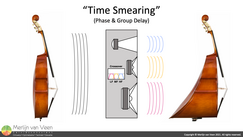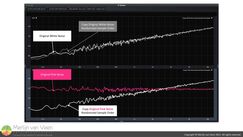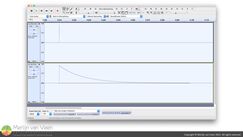
- Details
 Figure 1Many seminar attendees are pretty indiscriminate at first about a loudspeaker's phase response. And tend to be shocked once you point out that typical full‑range loudspeakers (including studio monitors) with decreasing frequency are "smeared out" in time by a couple of dozen milliseconds (Figure 2).
Figure 1Many seminar attendees are pretty indiscriminate at first about a loudspeaker's phase response. And tend to be shocked once you point out that typical full‑range loudspeakers (including studio monitors) with decreasing frequency are "smeared out" in time by a couple of dozen milliseconds (Figure 2).
- Details
In part 2 of this article series, we will explore how filters — that invariably change level or phase as a function of frequency — can affect crest factor. Towards the end, you can download a MS Excel Workbook for free that contains all relevant calculations and graphics used in this article.
- Details
Crest factor is an important metric associated with phenomena such as (but not limited to) headroom, distortion, instantaneous power consumption, and loudspeaker driver excursion.
In part 1 of this 4‑episode series on crest factor, we will begin by defining crest factor first. Towards the end, you can download a MS Excel Workbook for free that contains all relevant calculations and graphics used in this article.
Subsequent episodes will cover crest factor and filters, crest factor and power consumption, and crest factor in the air: measuring sound levels.

